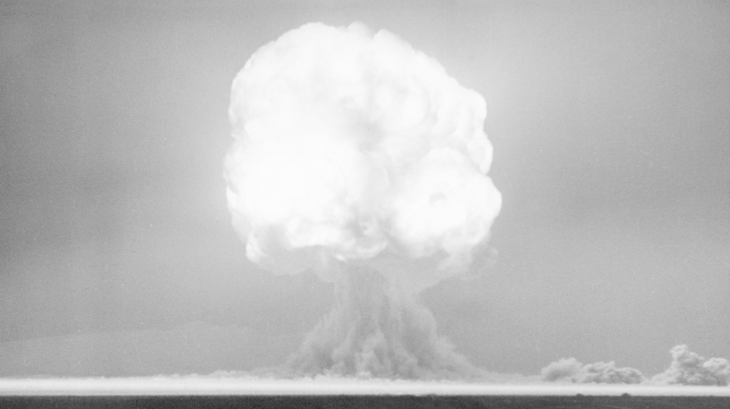It’s the 70th anniversary of the Hiroshima this week which brought up an interesting conversation between my husband and myself. The question was, is the atomic bomb and its aftermath an appropriate topic for a 9-year-old? If not, why not? And if so, then how can we make sure she is getting age-appropriate, factual content without damaging her faith in humanity?
I have to admit, I was initially opposed to talking about this topic with my daughter, who has been known to get deeply upset over stories of missing children or injured animals. My husband falls more in the “Those who cannot remember the past are condemned to repeat it” camp. He believes it is our duty to provide the information she needs to form her own opinions and make her own judgements. The key, he says, is to balance the more troubling information with stories of people who did good deeds, who helped, who made the world a better place.
Is the atomic bomb and its aftermath an appropriate topic for a 9-year-old? If not, why not? And if so, then how can we make sure she is getting age-appropriate, factual content without damaging her faith in humanity?
So it was decided. We are going to try to make Meredith’s world a little bigger by beginning a conversation about Hiroshima. We’ll start by sharing a copy of the Cobblestone issue called “Building the Bomb: Dawn of the Atomic Age.” Inside the issue you and your child will find more than just facts about the atomic bomb. You’ll find the context that will allow you to have a more nuanced discussion that will lead beyond the hows and the whens to the whys of the event and its aftermath. Below you’ll find one article from that issue, called “The Test,” which is, naturally, about the test of the first bomb. Inside you’ll also find articles such as “Ground Zero: Japan” and “Top Secret Places.” Together, they comprise a complete package that will give you a starting point for discussing a historical event with a tragic outcome and long-term, far-reaching, global implications.

The Test
By Craig E. Blohm
The light rain had stopped an hour before and now a fresh breeze blew gently across the bleak New Mexico desert at the Alamogordo Bombing and Gunnery Range. Early Spanish explorers had named this place Jornada del Muerto (Journey of Death). It was an especially apt name on this particular Monday morning, for at the top of a 100-foot-high steel tower rising from the desert floor sat an instru¬ment of death the world had never seen. It was just before dawn on July 16, 1945. A test called Trinity was about to begin.
Over the past few years, the scientists working on the Manhattan Project had answered many questions, from how much uranium to use to how to control the detonation. One final question remained— perhaps the most serious one of all. How large would the explosion be? Guesses ranged from a total dud to a blast that would ignite the atmosphere and destroy the world.
In the days prior to July 16, scientists had transported the components for the bomb the 230 miles from Los Alamos to the test site. They assembled the plutonium core in an abandoned ranch house before fitting it to the bomb at ground zero. They also set up equipment and instruments to measure aspects of the exploded bomb.
Nicknamed “the gadget,” the bomb sitting atop the tower was an implosion device. It depended on an inward blast of high explosives to drive two hemispheres of plutonium together to create the atomic explosion. As the countdown echoed across the desert, soldiers and scientists waited in concrete bunkers miles from ground zero.
“. . . 9 . . . 8 . . . 7 . . .”
Soldiers donned welder’s goggles to protect their eyes.
“. . . 6 . . . 5 . . . 4 . . .”
Scientists stared at their instruments.
“. . . 3 . . . 2 . . . 1 . . .”
Men crouched behind protective barriers and in bunkers.
“0!”
An intense light, brighter than the sun, turned the predawn darkness into day. A cloud of smoke and fire climbed thousands of feet in seconds, changing color as it rose. Climbing higher, towering miles into the sky, the cloud formed the shape of a huge, grotesque mushroom.
At ground zero, where the bomb had landed, a crater about 2,400 feet wide and 10 feet deep had been blown. Every living thing within a mile was destroyed. Windows in buildings 120 miles away were shattered. The bomb’s power was equal to more than 20,000 tons of TNT.
Trinity was a scientific and military success. The Manhattan Project had achieved its goal. Less than a month later, two atomic bombs were used to bring the fighting in World War II to a close. While the atomic bomb ended that chapter in world history, it also marked the beginning of the Atomic Age. Now that atomic bombs existed, many people worried about how to control their use.



